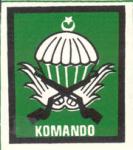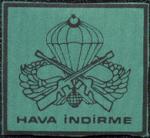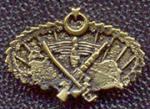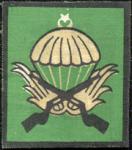-
Posts
4,908 -
Joined
-
Last visited
-
Days Won
97
Content Type
Profiles
Forums
Blogs
Gallery
Events
Store
Everything posted by Dave Danner
-

EK 1914 How does one research an Imperial Unit?
Dave Danner replied to Scott Powell's topic in Germany: All Eras: The Iron Cross
A Hannoverian regiment, with troops from the Prussian province of Hannover and the Duchy of Braunschweig (Brunswick). There is a regimental history: Königlich Preußisches Reserve-Infanterie-Regiment Nr. 78 im Weltkrieg 1914/1918, by Hanns Möller, published in 1937. Worldcat shows copies in the New York Public Library and at UC-Riverside, as well as various German libraries. Some basic information: http://wiki-de.genealogy.net/RIR_78 -

EK 1914 Saxon Weimar EK1 group
Dave Danner replied to Chris Boonzaier's topic in Germany: All Eras: The Iron Cross
-

EK 1914 Saxon Weimar EK1 group
Dave Danner replied to Chris Boonzaier's topic in Germany: All Eras: The Iron Cross
Daniel's and Rick's published rolls show 3,887 names for the Silver. Stöber, however, does not appear to be one of them. There are apparently a number of late war awards from Saxe-Weimar missing from the rolls. -
No idea. The 1918 Bavarian Army seniority list only shows Bavarian decorations and the Militär-Wochenblatt stopped listing Bavarian EKs sometime in 1917, so many late war awards are missing. There is no Kriegsrangliste for Castell-Castell at Ancestry.com . To give you an idea of why they stopped listing the lower awards, here are the wartime volumes of the Verordnungsblatt des Königlich bayerischen Kriegsministeriums. The volume for the second half of 1916 is possibly the thickest book I have ever seen.
-
RIR 214 and IR 464 were considered Mecklenburg units, with a lot of soldiers from nearby regions (Schleswig-Holstein and the Hanseatic Cities). Actually, though IR 464's replacement formation was GR 89, most of the companies used to create it came from Schleswig-Holstein and Hanseatic regiments (RIR 31, IR 84, IR 85, FR 86, IR 162, IR 163). No Garde connection. Googling, I find reference to an "Ehrenzeichen der Alten Garde" in connection with the Stahlhelmbund, but this wasn't a cross.
-
I can't find any Noberts. I think it could be Hptm.d.R. Paul Nobach, who was a reserve officer in the reserve of GR 89. As a north German (Mecklenburg regiment and Hamburg reporting station), he would be a little out of place in this south German division (one Baden and two Lorraine regiments), but by 1918 old affiliations might not mean as much. The two Lorraine regiments were probably mostly made up of men from the more populous Rhineland by this point anyway.
-
I saw a large number of original Japanese mounting bars for anywhere up to 10 or so medals at a show in Kentucky in the mid-1990s. Given how easy it is to mount Japanese medals with their standard hook-and-eye closure, I'm not sure I would trust any mounted group or place a value any higher than that of the individual medals.
-
Here are the regulations for the Grand Ducal Mecklenburg contingent, decreed in 1898. They are rather different. After the Iron Cross come Mecklenburg orders and decorations, then Prussian orders and decorations. Then come other German states' and foreign countries' war decorations, and then their peacetime orders and decorations. Then campaign, commemorative and service medals, in the same order: Mecklenburg, Prussia, other German states, and foreign countries.
-
As Sascha notes, Prussian rules put all Prussian awards, even peacetime ones, ahead of other German states, and then foreign countries (with a few exceptions). From the Guidebook for Reich, State and Community Officials (Rathgeber für Reichs-, Staats u. Kommunalbeamte), published in 1901, here is a Prussian order of precedence after the introduction of the Centenary Medal.
-
1. Stein, Hermann v., Genlt. • 1.3.1856-8.3.1928 • IR 124 - 20.3.11-22.4.14 • 51.IB - 22.4.14-20.7.16 • 204.ID - 20.7.16-2.1.19 • 26.ID - 2.1.19-8.5.19 2. Franke, Adolf, Prussian Gen.d.Art. • 10.11.1852-21.11.1937 • http://de.wikipedia....ranke_(Offizier) 3. Graevenitz, Friedrich v., Genlt./Gen.d.Inf.a.D. • 7.1.1861-28.2.1922 • Militär-Bevollmächtigter im Großen Hauptquartier in Berlin, stellv. Bevollmächtigter zum Bundesrat • Diensttuender Generaladjutant SM des Königs ab 5.7.18 4. Hofacker, Eberhard v., Genlt. • 25.6.1861-29.2.1928 • http://home.comcast....ka/hofacker.htm 5. Köhler, Gustav, Genmaj. • 10.7.1864-16.12.1920 • FAR 15 - 19.11.12-13.10.14 • 42.FAB - 13.10.14-22.2.17 • Art.Kdr. 65 - 22.3.17-27.6.18 • 54.RD - 28.6.18-6.12.18 6. Gerok, Friedrich v., Gen.d.Inf. • 26.5.1854-18.9.1937 • http://home.comcast....r/aka/gerok.htm • http://de.wikipedia....Gerok_(Offizier) 7. Hügel, Eugen Otto Freiherr v., Gen.d.Inf.z.D. • 23.12.1860-2.9.1924 • http://home.comcast..../aka/huegel.htm 8. Freudenberg, Rudolf v., Gen.d.Inf.z.D. • 19.8.1851-17.3.1926 • IR 126 - 22.3.97-4.6.98 • 52.IB - 4.6.99-22.4.02 • 27.Div. - 22.4.02-22.4.05 • 11.LD - 3.2.15-20.11.16 • 93.ID - 20.11.16-3.9.18? • stv.Fhr. XVII.RK - 21.11.16-15.9.17 9. Mohn, Alfred v., Genmaj. • 3.3.1863-6.3.1921 • FAR 51 - 28.4.12-22.3.13 • 26.FAB - 1.4.13-12.4.16 • 25.RD - 12.4.16-19.6.18 10. Glück, Eugen, Genmaj. • 15.8.1862-19.5.1944 • LIR 122 - 2.8.14-24.9.14 • IR 121 - 24.9.14-9.11.14 • IR 126 - 10.11.14-20.7.16 • 242.IB - 20.7.16-16.3.18 • 51.IB - 16.3.18-18.10.18 • 52.ID - 23.10.18-12.12.18 11. Schmidt, Wilhelm von, Genlt.z.D. • 25.3.1842-11.10.1930 • FR 122 - 24.7.90-21.4.93 • Ldst.IB Stuttgart XIII/2
-
In case anyone is still interested, some additional information on Herr Fehringer: Maximilian Emil Hugo Fehringer born 19 September 1870 in Stavenhagen, Mecklenburg-Schwerin, as Rick noted. He retired on 1 October 1932, so that's why he disappeared from Rick's city directories. His initial military service was as a Einjährig-Freiwilliger in 4. Garde-Regiment zu Fuß from 1.10.1893-30.9.1894. He was promoted to Unteroffizier on 4.7.1894 and Vizefeldwebel on 24.5.1895. Glenn gave his officer promotions, but I can add that he was characterized as a Maj.d.L.a.D. on 30.12.22. Decorations: • Prussia: 1914 Iron Cross 2nd Class • Prussia: 1914 Iron Cross 1st Class • Prussia: House Order of Hohenzollern, Knight's Cross with Swords • Prussia: Landwehr-DA 1.Klasse • Mecklenburg-Schwerin: Military Merit Cross 2nd Class • Mecklenburg-Schwerin: Military Merit Cross 1st Class • Austria-Hungary: Military Merit Cross 3rd Class with War Decoration • Germany: Wound Badge in Black (wounded in August 1914 as an OLt.d.L., 5./RIR 7) His HOH3X was gazetted in the Militär-Wochenblatt on 21 November 1917. Regards
-
That is the statute ribbon. The ribbon which is red with a single blue edge stripe is not the ribbon of the Order of the Star. It is the ribbon of the Cross of Military Virtue (Crucea Virtutea Militara). Similar to Austro-Hungarian and Bulgarian practice with their bravery ribbons, this ribbon was used for the Order of the Star to indicate wartime bravery awards. For enlisted men, the Cross of Military Virtue was the highest bravery award. It outranked the other enlisted awards such as the Faithful Service Cross, Faithful Service Medal and Medal for Steadfastness and Loyalty. I find it hard to imagine that a retread World War I veteran most likely not in the frontlines (KVK2X but no EK2 Spange) would have earned it. So it is most likely the Württemberg award. For what it is worth, in going over various Bavarian records, I have encountered a number of non-native Bavarians who had previously served in other contingents, but when the war began they were living or working in Bavaria. So they reported to the local Meldeamt to sign up, and ended up in a Bavarian contingent. So the Württemberg DA doesn't necessarily mean he served in WW1 in a Württemberg contingent.
-
You already have more information than is available on many WW1 casualties. However, I can add that he was with the 3. Eskadron of Reserve-Husaren-Regiment Nr. 6 when he was wounded, and died of his wounds in Reserve-Feldlazarett A, IX. Reservekorps. Groß Siemz was in Mecklenburg-Strelitz, but he does not appear to have received the Cross for Merit in War before his death. Groß Siemz is also not very groß - its population in 1910 was 69 and a century later its population in 2010 was 300.
-

Turkey Unknown Turkish Insignias from the 1960s -1980s?
Dave Danner replied to Lion101's topic in Türkiye
I assume you are referring to the badges with the mountain above crossed rifles with a wreath. For these, yes, I believe it is just the wording. They are all commando qualifications in mountain and commando units (Dağ ve Komando Birlikleri). I thought which don't say KOMANDO at all are different, meaning only a more basic mountain warfare course and not the full commando course, but they may just be a variant. DAĞCI KOMANDO is probably just a variant, as "dağcı" just means mountaineer. And, of course, the ones saying JANDARMA are different, but only because they are for gendarmerie commando units. The ones with the parachute are a different type of commando, an airborne commando. I do not believe mountain commandos are typically airborne-qualified. As I showed, these exist with and without the actual word "KOMANDO" appearing. Regular airborne badges also exist with and without the text "HAVA İNDIRME". -
I have an Otto Kurt Konstantin von der Mülbe, born 22.8.1894. He was the son of Kurt Otto von der Mülbe, 8.6.1862-21.5.17, at the beginning of the war an OTL and Vorsteher der Geh. Kriegskanzlei, killed in action as an Oberst commanding 231. Inf.-Brig. He was further the grandson of Genlt.z.D. Otto Wilhelm Adolf von der Mülbe (1829-1916). If he is the same guy as the WW2 Dr. Otto von der Mülbe, then: Maj.(E), 1.8.37 OTL, 1.10.43 There were two von der Mülbes in GGR 2: 1. probably Otto: Fähnrich, 23.9.14 Leutnant, vorläufig ohne Patent, 10.10.14 later received a Patent of 19.2.13 N8n in the Ehrenrangliste as an OLt.a.D. 2. A Fähnrich promoted to Lt. on 28.7.19 with a Patent of 20.6.18. I think this may be Werner, born 23.8.1898. He was a distant cousin. There was another cousin, Wilhelm, born 10.5.1901, but he might be too young. I am travelling right now. When I get back to Washington, I can check to see if there is a Wehrmacht personnel file.
-

Turkey Unknown Turkish Insignias from the 1960s -1980s?
Dave Danner replied to Lion101's topic in Türkiye
Regarding the commando qualifications, here are three variants: My understanding is that the patches are mountain commando qualifications. There are variations because they can be issued not only by the Eğirdir Mountain Commando School and Training Center (Eğirdir Dağ Komando Okulu ve Eğitim Merkez Komutanlığı), but also by training course run in certain mountain and commando units (Dağ ve Komando Birlikleri). I think the scorpion in the corner of your patch might represent one of these units. From what I understand, and I may be wrong, the first one above is a basic mountain warfare qualification, and the other two are mountain commando versions, with the bottom one being Jandarma, as Demirhan noted. I have also seen another version which reads "DAĞCI KOMANDO". There is another commando qualification, for airborne commandos (Paraşütçü Komandolar). Here are two versions, with a regular airborne qualification for comparison (hava indirme means "airborne"). http://gmic.co.uk/uploads/monthly_06_2012/post-432-0-07254400-1339384023.jpghttp://gmic.co.uk/uploads/monthly_06_2012/post-432-0-94692200-1339384450.jpghttp://gmic.co.uk/uploads/monthly_06_2012/post-432-0-20728100-1339384034.jpg Special Forces (Özel Kuvvetleri) have their own qualfication badge. I only have a more recent (1990s) metal version, but there are versions in other materials: -
Penultimate means next-to-last, not last. I assume you have reason to believe this Saxon had the Dannebrog? If so, I think it is the last ribbon, not the penultimate one. The last ribbon appears to have dark narrow edge stripes, which fits the Dannebrog. The penultimate ribbon has narrow white (or other light colored) edge stripes, which the Dannebrog did not have. It could be the Montenegrin Order of Danilo or some other decoration with a similar pattern.














